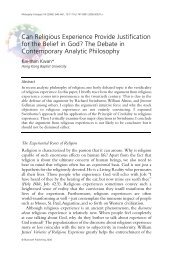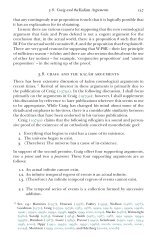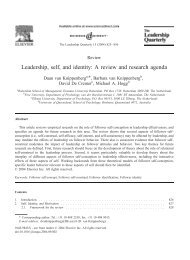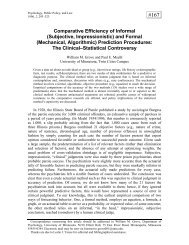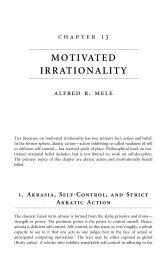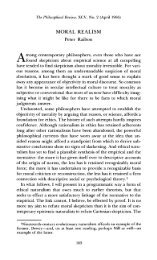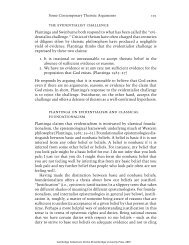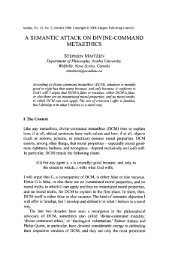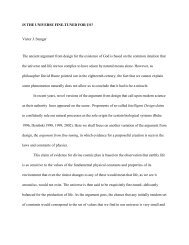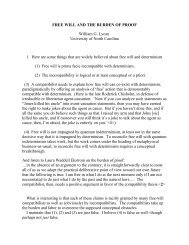Atheism and Theism JJ Haldane - Common Sense Atheism
Atheism and Theism JJ Haldane - Common Sense Atheism
Atheism and Theism JJ Haldane - Common Sense Atheism
You also want an ePaper? Increase the reach of your titles
YUMPU automatically turns print PDFs into web optimized ePapers that Google loves.
236 J.J. <strong>Haldane</strong><br />
the thought or perception of a cat say, there are two aspects: nature (the conceptual<br />
or perceptual content), <strong>and</strong> the fact of its being actualized in the<br />
thought. An intentional content does not imply the existence of a cognition<br />
in which it is tokened, <strong>and</strong> so the actual occurrence of a thought calls for an<br />
explanation in terms of some efficient cause of it. Here the anti-realist’s<br />
journey to God may be shorter than that of the realist since it skips out a<br />
chain of interacting natural substances <strong>and</strong> moves directly to mind as the<br />
cause of ideas, <strong>and</strong> thence from contingently to necessarily existing mind.<br />
Such is one way in which anti-realism may be linked to theism. This,<br />
however, does not rely on any feature distinctive of anti-realism, but only<br />
on showing that the anti-realist has to allow instances of that from which<br />
the realist argument also starts, i.e. existent being. Next I wish to examine<br />
a different link: one which proceeds from a claim that the realist certainly<br />
denies, namely that the world is constituted by the ways in which we do, or in<br />
which we could, conceive or experience it. The most immediate route to this<br />
anti-realist theses is that laid out by Berkeley in his Treatise Concerning Principles<br />
of Human Knowledge, when he argues that the common assumption that<br />
the objects we perceive exist independently of their being perceived involves<br />
a contradiction. Berkeley writes:<br />
what are [houses, mountains, rivers] but the things that we perceive by sense,<br />
<strong>and</strong> what do we perceive besides our own ideas or sensations; <strong>and</strong> is it not<br />
plainly repugnant that any one of these or any combination of them should<br />
exist unperceived? . . . all the choir of heaven <strong>and</strong> furniture of the earth, in a<br />
word all those bodies which compose the mighty frame of the world, have not<br />
any subsistence without a mind, their being is to be perceived or known. 14<br />
In reply, the realist will protest that one can think of many things existing<br />
unperceived or unconceived – such as objects far away in space <strong>and</strong> time. But<br />
Berkeley is ready with his response, namely that just as one cannot see a thing<br />
that is at the same time unseen, so it makes no sense to claim to conceive a<br />
thing which is unconceived; <strong>and</strong> since what is conceived exists as such in the<br />
mind, so in conceiving of something ‘unconceived’ one is not in fact conceiving<br />
of something outside the mind itself. 15<br />
One may respond to Berkeley’s overall argument by drawing on two distinctions,<br />
each of which serves to disambiguate innocent <strong>and</strong> threatening<br />
interpretations of such claims as that thought involves ideas, <strong>and</strong> that what is<br />
conceived is ipso facto in the mind of a thinker. The first is between ideas or<br />
concepts as media, <strong>and</strong> as objects of thought. In the Summa Theologiae Aquinas<br />
writes that ‘ideas st<strong>and</strong> in relation to the intellect as that by which the intellect<br />
thinks <strong>and</strong> not as what is thought of ’. 16 Secondly, it is one thing to be<br />
spatially present or contiguous <strong>and</strong> another to be cognitively so. Conjoining



